Hall of Fame consumer electronics: the history of the best gadgets of the last 50 years, part 1
- Transfer
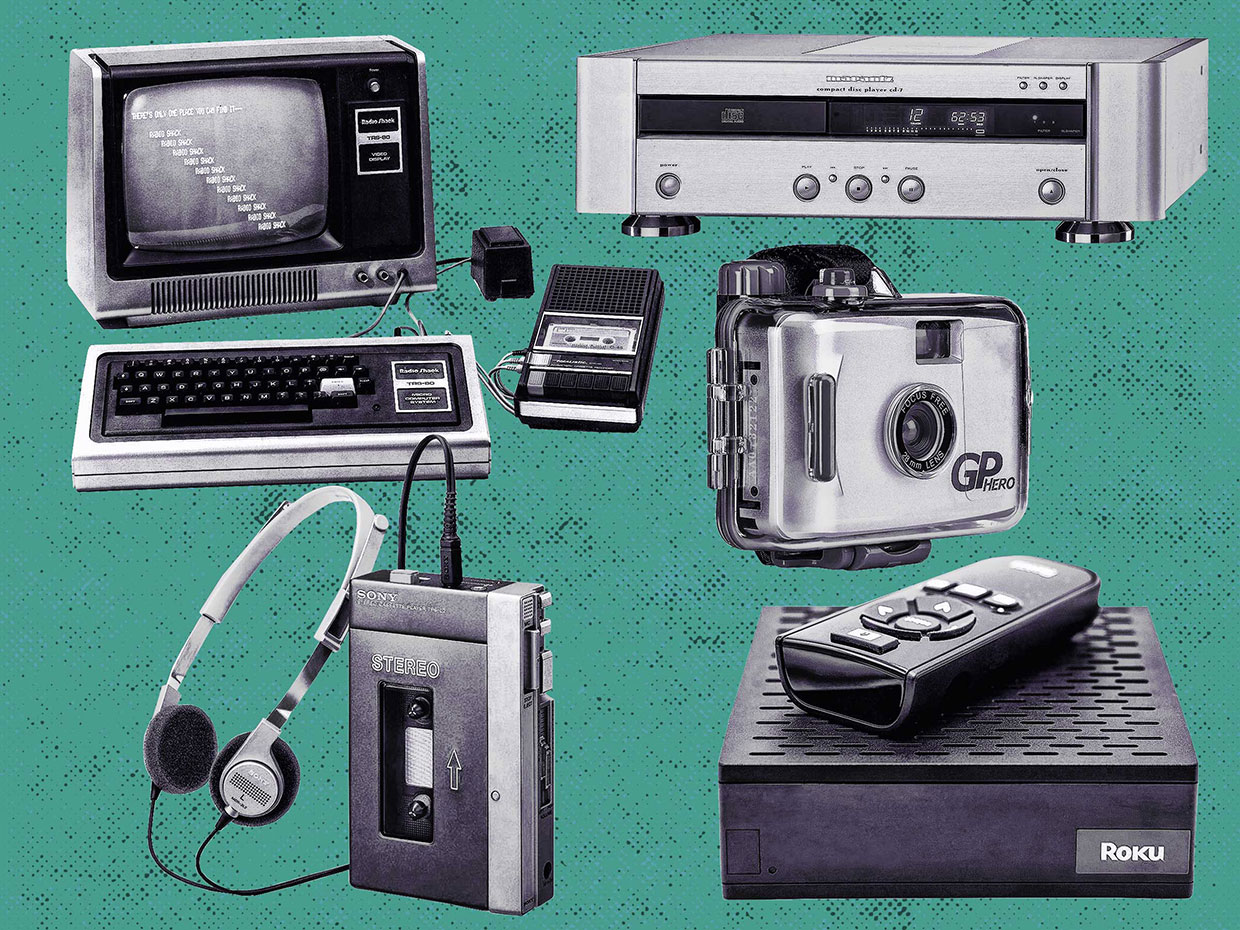
Today we are all tied to our gadgets. We, residents of developed countries, wake up to the sound of a smartphone, as possessed constantly appeal to him during the day, and then fall asleep, not letting it go. From dawn to dusk, we look at our smart watches, on monitors, television screens and tablets, listen to the radio and other audio electronics, often through headphones. Sometimes we launch drones, take photos with cameras built into cell phones, or play consoles. We are accustomed to devices that help us in work and rest, and to some devices that not only help us, but fully automate part of our work and leisure.
All this gadget infrastructure has been created by electrical engineers for decades. We recall some of their remarkable creations with pleasure, but many have already been forgotten.
And we in IEEE Spectrum magazine decided to choose the best gadgets over the past 50 years and pay tribute to them. Disclose and describe everything why, how and when. And, yes, of course, it will be a controversial material. We even argued about this list ourselves and got a lot of pleasure from it. What was more important - Roku or TiVo? Having survived slander, recriminations and having drunk a half-box of beer, we came to an agreement.
But before you start this list, you must select a criterion. And here are our criteria. First, these are the gadgets that appeared after 1968. Yes, until 1968 there was also consumer electronics. The time from the 1920s to the 1950s was the time of phonographs, as well as radio and television receivers acting as furniture. But everything interesting began in the late 1960s. Cheap transistors appeared everywhere, and designers began to use miniature integrated circuits. Solid-state electronics became the oxygen that fed the Cambrian explosion, leading to the emergence of today's thriving jungle gadgets. Integrated circuits and other solid-state ingredients allowed engineers to create really useful, compact and reliable gadgets. Those who managed to get us to fork out.
Having defined the time frame, you can begin to think about which items need to be perpetuated in our hall of fame. Should these be the most successful commercial models? The very first in its class? The most interesting in terms of engineering solutions? Gadgets that have become cult for not entirely clear reasons? We answer these questions: yes. Sometimes a new product is striking in its breakthrough genius. Sometimes the most commercially successful example becomes a winner for reasons much more interesting than brute force. Sometimes the coolest gadget is a device with the most important engineering breakthroughs; perhaps it was not sold in huge quantities, but became a cult one. Or, perhaps, the decisions were not so cool - just normal, but his cult status still appeared. This can also be a cool story.
Here are the gadgets that the IEEE Spectrum editors considered the greatest. Without a doubt, we missed something from your list of favorite devices. Maybe your entire list. So do your duty and mention them in the comments.
Roku DVP N1000
Roku succeeded in a chaotic market against all odds - and set standards that larger competitors began to replicate.
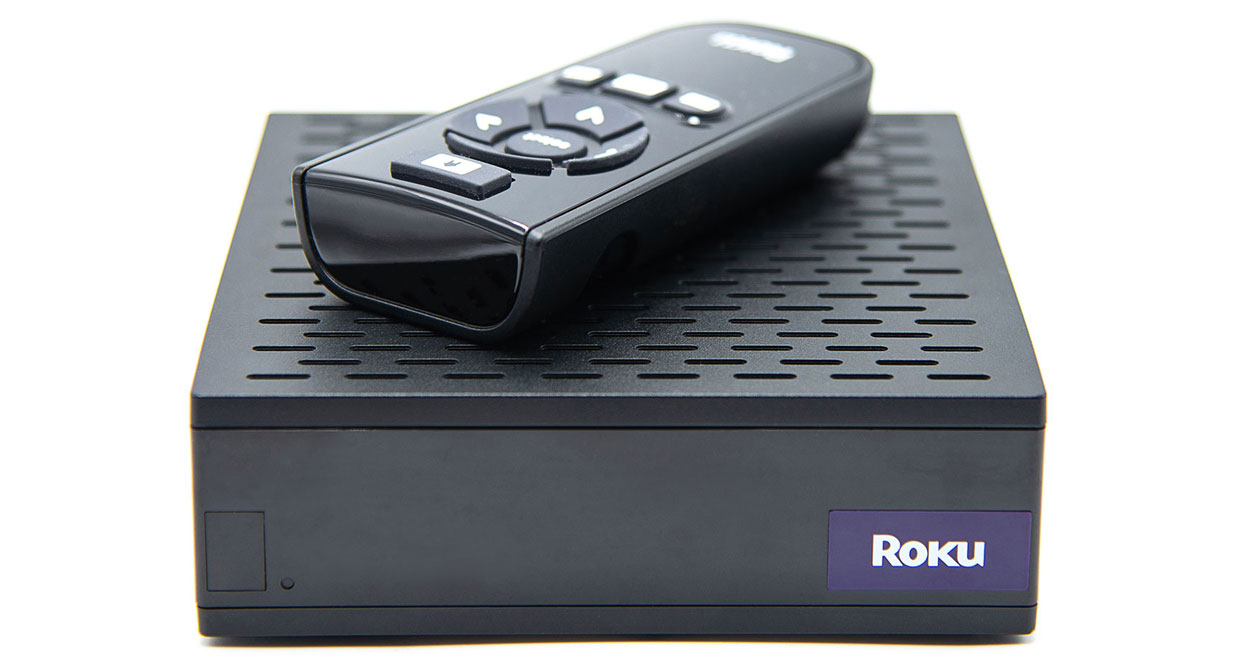
The smaller and simpler the better. Among the innovations that director of the company Anthony Wood is most proud of is a very simple control panel, which was then imitated by Amazon and Google.
When it first appeared in May 2008, Roku was not guaranteed success. It was not clear whether there would be a great demand for streaming video when cable, satellite and IP television had such attractive offers.
Roku’s chances of success depended on several unforeseen circumstances that did not seem plausible at the time. For example, that young streaming services like Netflix and Hulu will be so cool that they will give viewers a compelling reason to get rid of subscriptions to pay-TV channels or fork out for streaming content, and that these services will remain independent and they will have to offer their content to a third-party player. In addition, paid TV channels will refuse to support Netflix and Hulu, and other independent services, through their own set-top boxes (in fact, this could be put, given the fierce competition in the pay-TV market).
Roku understood that even if all of this worked in their favor, they would still need to make a set-top box inexpensive compared to gaming systems like the PlayStation and Xbox — which already knew how to output streaming video, or compared the DVD recorder ReplayTV, which is not associated with specific cable TV channels. One thing was clear: Roku needed to be inexpensive compared to the most well-known streaming device of the time, Apple TV, which Apple introduced in the hope of launching its pay-TV. All of these systems cost over $ 300.
On the other hand, there was some good news - viewers who did not have a game console with a player would not buy a console, only to watch Netflix or Hulu. And what was the point of spreading the cost of the whole gaming system for Apple TV, on which it was impossible even to play Grand Theft Auto? In the end, it was all about the fact that an independent player should have cost much less.
The first Roku player, the DVP N1000, was based on the PNX8935 decoder, which NXP developed specifically for low-cost, high-resolution consoles. Making such a device was risky for NXP, since there was practically no market for HD-quality stream players at that time. Roku helped create it.
Roku also had 256 MB of memory. It supported the standard and high resolution of 720 p (and soon added a resolution of Full HD 1080p). Roku entered the market at a price of $ 99 and a good time: streaming services Netflix and Hulu were gaining popularity, and people were looking for a device to view them.
The N1000 Roku prefix "started the race for the low price of a streaming player that created a mass market," said Roku director Anthony Wood . The company specifically created the architecture, which sent a downward trend, he added. Today, some Roku models are sold for only $ 29 (and the cost of models of several competitors differs by only a few dollars).
Wood issued a list of qualities of the first Roku player, which determined the category of streaming video players. Before the N1000, most of the devices had a size of 17 "." We were the first to set the trend "less - better", "he said. Some of the modern models are comparable in size to the thumb of an adult man. Roku was also the first to make" a very simple remote control "Said Wood, which set the standard for Amazon, Google, and others.
The N1000 was the first prefix with updated firmware, and used this ability to add channels. “Users didn’t have to do anything, it happened by itself. At the time, this behavior was controversial, ”Wood said. Another controversial feature was the lack of a shutdown button. And it was worth the initial negative feedback, Wood said, as "incredibly simplified use."
Ten years later, Roku leads the sales of streaming video consoles — both big and dongle — ahead of Amazon Fire TV, Google Chromecast, Apple TV, TiVo, Sony, and others.
Marantz CD-7
The project to create a better CD player was based on the development of a low-pass filter.
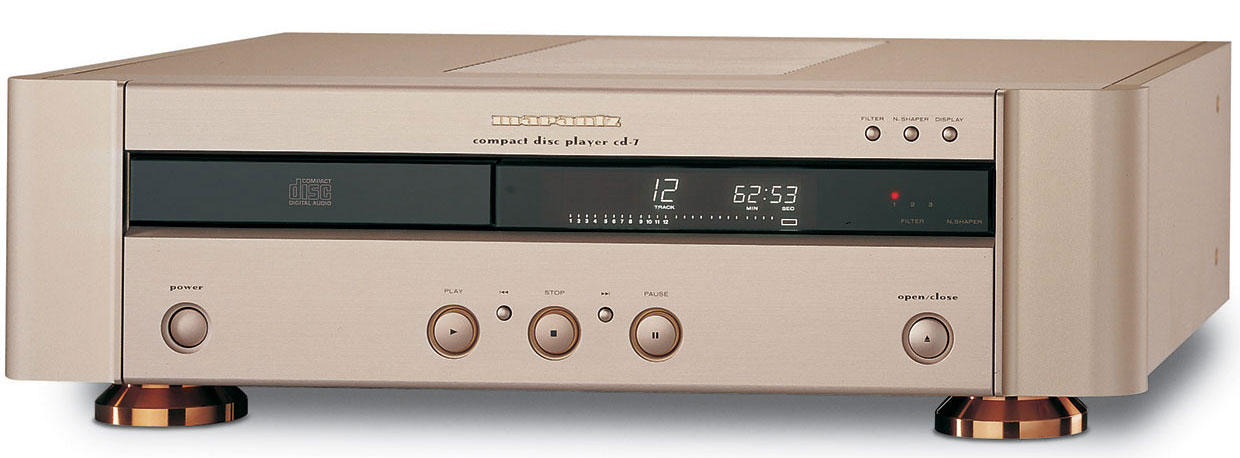
Best disc player? Marantz CD-7, the result of a search for the ideal quality of playing discs by one person, struck audiophiles, having appeared in 1998.
There are very few perfumers able to identify all the dozens of smells mixed in with expensive fragrance. However, the video industry hires people who are able to look at the image displayed on the display with a resolution of 8K, and determine whether the image clarity is spoiled by just a few thousand incorrectly displayed pixels from the 33 million points contained in each frame. And their perceptions can be objectively verified.
And there are still audiophiles. Some of them claim to feel the difference between the gold and silver wires connected to the amplifier. They give the sound characteristics such as " warmth“,“ Dryness ”and“ darkness ”, which are difficult to explain, not to mention quantifying, and they can argue about these parameters as if they are sharing Alsace and Lorraine. So when audiophiles agree on the quality of certain sound equipment, that is, the likelihood that this device is the best in its class, for example, the CD player Marantz CD-7, which is an almost complete rework of the previous model CD-15.

Perfectionist Ken Ishivata developed a unique filter for CD-7.
The basic principle of the digital era is that in the process of technological progress, everything is improving - and it happened with CD players from Marantz right up to the CD-15 model. And initially the CD-15 was greeted with enthusiasm. But soon the opinions among the audiophiles were different. Some scolded him for “too high definition of sound”. Whatever it means. Marantz engineer Ken Ishivata , who worked on the CD-15, was among the unsatisfied. He began work on a new model, rejecting the nominally more advanced digital-to-analog converter (DAC) used there, the TDA1547, and used the older 16-bit TDA1541, which was used in the company's players long before the CD-15. Ishivata knew that if you carefully use this older chip, the result will be a wonderful sound.
Ishivata told us that he invented the use of an old DAC with an improved filter. Since he didn’t like the quality of the finite impulse response filter in the CD-15, Ishivata decided to “maximize the wonderful possibilities of music” by creating his own filter. To understand what he did, you need to understand a bit about the topic.
A CD player does not simply extract digital samples from a CD and sends them to a DAC for conversion to an analog wave. It uses a process called interpolation, in which additional samples are created that are inserted between the “real” to increase the sampling rate. This process usually increases the frequency by 4-8 times. The advantage of interpolation, also known as oversampling or oversampling, is to drastically reduce the requirements for the low-pass filter after the DAC and remove some high-frequency artifacts generated by the DAC so that they do not spoil the sound quality.
In the CD-15 DAC TDA1547 worked in tandem with a filter (SM5803APT from Nippon Precision Circuits), increasing the sampling rate by 8 times. In order to create a better quality filter for the new player, Ishivata began by extracting the source code of the Philips SAA7220 digital filter chips . Then he added his own code to them, and launched it on a pair of Motorola 56000 processors, connected by him (he called them the “Double Crown”). This configuration allowed him to return to a fourfold upsampling, which, according to some audiophiles, gives a better sound quality than eightfold (at least when comparing two Marantz models).
And Ishivat's work with the CD-7 model did not end at the scheme stage. The mechanism of CD players for reading discs, in which lasers and lenses are combined, is called a transport. The accuracy of reading discs depends on the quality of transport. The previous model of the company, CD-15, was praised by audiophiles for using the Philips CDM4 Pro, one of the best transports ever made. However, by the time Ishivata began working on the CD-7, Philips had not released them. Ishivatu was not satisfied with the generally accepted replacement (CD12.3), so he used the company to remake CD12.3 from scratch, for example, adding a diamond-coated stainless steel slide for a more pleasant disc loading.
The resulting CD-7, released in 1998, was similar to other Marantz players in a stylish and balanced front panel design and the distinctive colors of gold and champagne. However, he was immediately appreciated for the sound, which is not inferior in quality to the sound of studio equipment, including such a characteristic as “unsurpassed rhythm intensity,” as one critic wrote. Whatever that means.
Tandy / RadioShack TRS-80 Model 1
RadioShack hoped that PC sales would correct the drop in sales associated with the extinction of interest in civilian radio transmitters
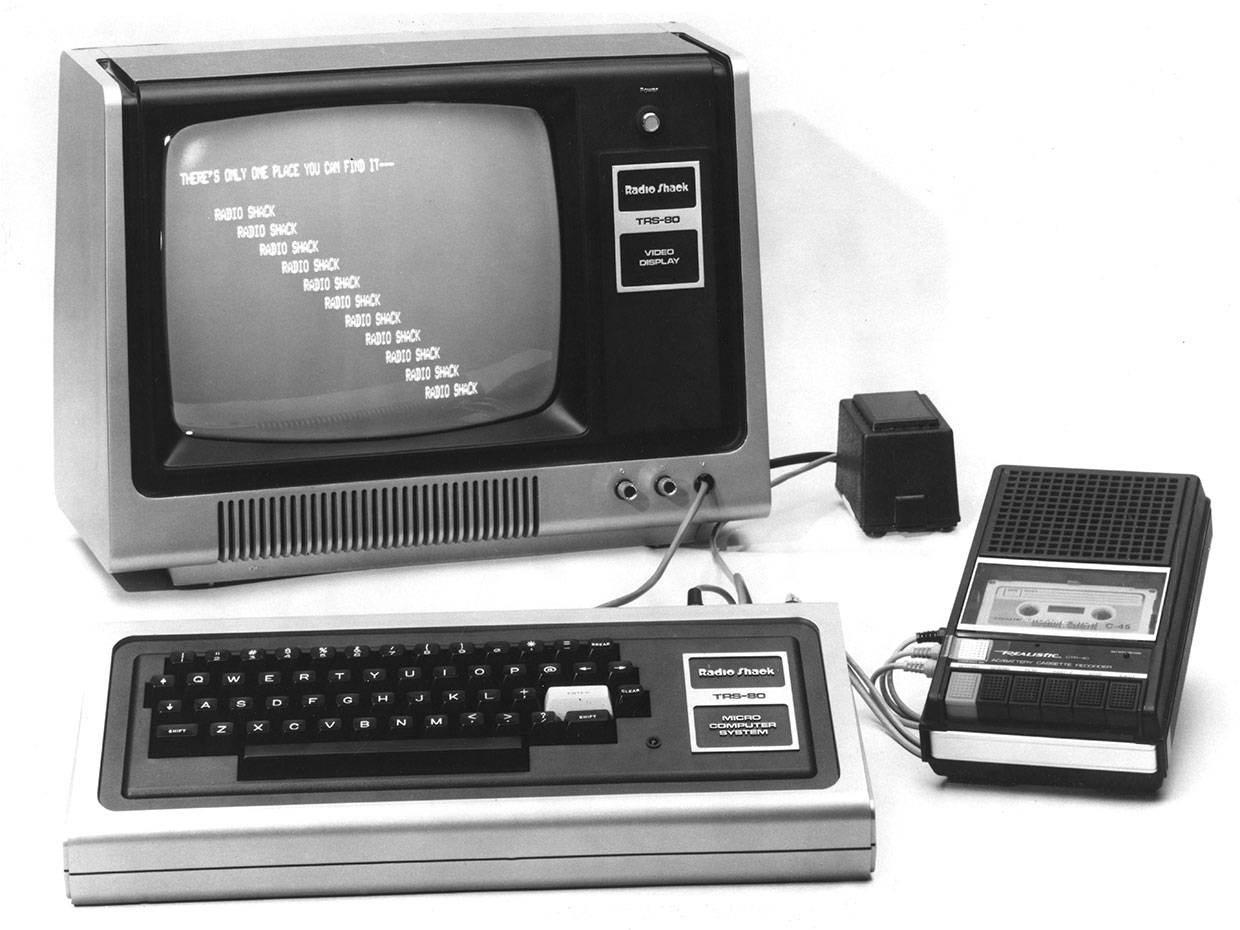
Border Peripherals: The TRS-80 originally came with 4 KB of RAM and a storage system that was a cassette player from RadioShack. The monitor was a black and white TV with an RCA connector and small modifications.
People are still alive, remembering the time when one retailer could dominate the entire product category. Thom McAn in the shoe area. FW Woolworth in the field of inexpensive clothing. Tower Records in the field of primitive music media. And once the company RadioShack turned the primacy in the field of electronics for homemade people into an unexpectedly long dominance in the field of home computers.
In the early years, the PC market was dependent on people whose hobby was electronics. Some home computers were sold in the form of designers for the assembly (the most famous - Altair 8800 ), and Apple was clearly not the only PC manufacturer to start with a garage.
Given the role of RadioShack in the field of home-made electronics, the company just needed to consider the option of selling personal computers, but it was not in a hurry to do it. Then it was not clear that this market will be able to grow greatly. In addition, computers threatened to be the most expensive product sold in RadioShack. However, by the end of the 1970s, the demand for the best-selling products, civilian radio stations, began to fall, so the company needed a new hit. Parent company RadioShack, Tandy, decided to try his luck with the PC.
Tandy / RadioShack (TRS) created the TRS-80 Model 1 based on the Zilog Z80 microprocessor at 1.77 MHz (hence 80 in the TRS-80 name). The Z80 was introduced in 1976 and at the price of $ 25 per unit it was the cheapest of the fastest microprocessors. Low cost was well combined with the desire to lower the cost of the final product as much as possible.
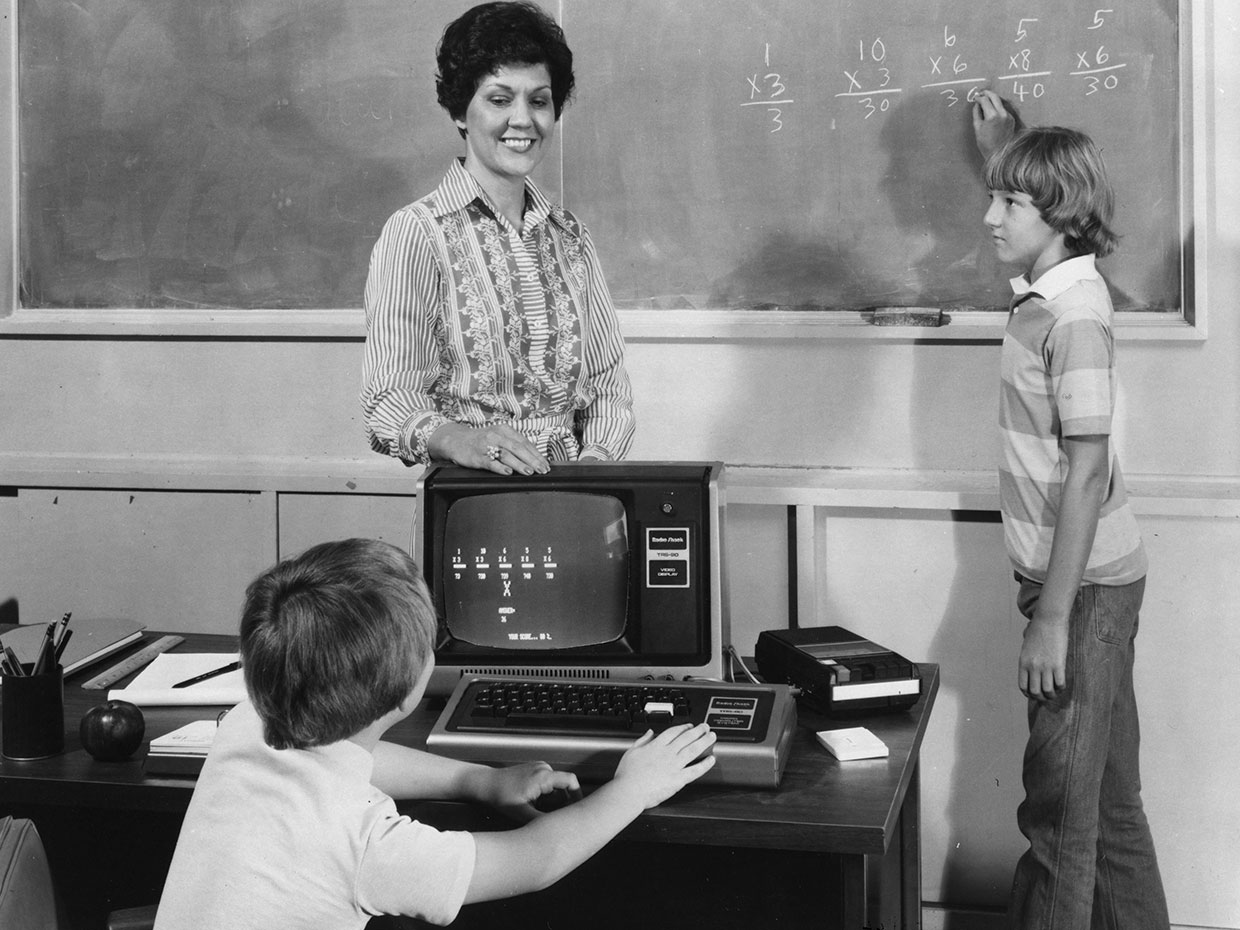
Teacher's Pet: RadioShack released learning software along with the original TRS-80, and this became part of a successful exit strategy for the school market.
The keyboard was built into the top of the computer's motherboard (typical at the time), and the monitor was a 12 "black and white CRT TV. Floppy disk drives were invented, but they were still expensive, so Tandy decided to use a cassette tape the player from RadioShack as a drive for the TRS-80 Model 1.
Two other PCs — the Apple II and the Commodore PET 2001 — sold fairly well in 1977. They cost $ 1,298 and $ 795, respectively. The basic set of TRS-80 Model 1 with a monitor cost $ 599.
Despite consumer complaints about poor quality, TRS-80 Model 1from Tandy / RadioShack discovered a huge market and helped PCs turn from a wonder for soldering iron lovers into a mass product. Looking back, we can say that Tandy correctly used an advantage over almost all other computer manufacturers: the huge, international retail chain RadioShack. RadioShack was the largest seller of PCs until 1982, and then `the TRS-80 line began to overshadow more powerful and flexible machines, including IBM personnel, various IBM PC-compatible models, and the Apple Macintosh line.
And although Tandy’s own PC line was gone, the company remained the largest PC manufacturer in the world until the early 1990s, and manufactured computers for other companies, such as AST Research, Digital Equipment Corp., GRiD Systems Corp., Olivetti and Panasonic .
Electric rice cooker Zojirushi Micom
Zojirushi was one of the first representatives of household appliances who began to use fuzzy logic, making it almost impossible to spoil a pot of rice

The Zojirushi rice cooker with fuzzy logic allowed it to overcome human failings — for example, when it adds too much water to rice.
People have been cooking rice for at least 12,000 years . But at the same time, just 35 years ago, Zojirushi invented how to protect this process from a fool.
Naturally, this achievement was preceded by several important milestones. The first consumer rice cooker was introduced in 1945 by Mitsubishi. It was the first of a number of electric cooking appliances that used heating elements to cook rice. When using them, it was necessary to monitor them and turn off when rice was ready. Toshiba introduced the first automated rice cooker in 1956. It worked with a simple bimetallic switch — when all the water was absorbed, the temperature of the metal utensils quickly increased, and the switch went off, which turned off the device.
Zojirushi declares that she was the first to present a function in rice cooker that allows keeping rice in a warm condition for hours. This model, which appeared in 1965, relied on semiconductors, which allowed to crank up such a trick. Before that, the company was best known for its thermos flasks.
After 18 years there was a breakthrough. In 1983, Zojirushi introduced the rice cooker, which became one of the first consumer appliances to rely on fuzzy logic. Interestingly, the company does not use this term in advertising, mentioning only a microcomputer (which it calls Micom), providing this logic. After 35 years, Zojirushi still considers all the information related to the development of a rice cooker a trade secret, and refuses to discuss anything.
Why did the world need to apply multi-valued logic to cooking rice? Because she solved the two remaining major problems of rice cookers: 1) different times for cooking different varieties of rice, and 2) cooks. Some rice cookers had settings for white and, say, brown rice. Zojirushi products take into account the type of rice, and cook it perfectly. As for cooks, so, despite the fact that rice only requires water and rice, people still periodically confuse proportions. And if the user of the rice cooker doesn’t mess up too much with the measurements, the rice cooker with fuzzy logic will simply adjust and produce perfectly cooked rice, despite people's mistakes.
At about the same time that fuzzy logic was applied to rice cookers, manufacturers switched to induction heating, which can be controlled more precisely by heating elements. The combination of fuzzy logic and induction heaters allowed to achieve the ideal in the preparation of rice. Or come close to it, while the singularity does not allow us to create rice cookers with ingenious intelligence.
Today, the rice cooker is the only electronic representative of kitchen appliances used by tens of millions of cooks daily. Fuzzy logic rice cookers make Tatung, Tiger Corp., Panasonic and others. Many are priced at less than $ 100. But the pioneer of this field, Zojirushi, still requires much more than $ 100 for most of its rice cooker models.
Microsoft xbox
The Xbox was a staggeringly incredible exception to the list of Microsoft's dismal attempts to make hardware for the end user.

Xbox appeared on the crowded gaming systems market in 2001 and made its way to the top with amazing graphics and a huge catalog of compatible games.
For any category of products on the consumer equipment market, it is very unusual to support four competitors, each of which has its own profit. In 2001, when Microsoft introduced its Xbox console , the trio of Nintendo, Sega and Sony were already present on the gaming systems market. Like now, then Microsoft was prominent in the software market, but it didn’t have the hardware. Among the failures of the company there is a whole mountain of things that even the most nostalgic users don’t remember - the Microsoft Mouse 1983, cordless phones (1998) and computer speakers (1998).
As a result, in 1998, there was every reason to doubt that Microsoft would succeed in successfully introducing some more complex hardware to the market than the computer peripherals with which it was trying to tinker. That year, Bill Gates, then the director of the company, approved the proposal to create a gaming system that would become the most powerful, feature-rich and probably the most expensive console.

Duane "The Rock" Johnson, then a professional wrestler trying to become an actor, became a guest at the Xbox presentation in 2001 at CES.
As now, Microsoft engineers perfectly understood this self-sustaining cycle that arises when you created a common hardware platform that a) works well and for which b) it is easy to write software. They took into account the experience of Microsoft with the PC, and reasoned that if developers can get to work right away, without spending several weeks or months learning the subtleties of programming for the system, then they can quickly create many programs that greatly increase the chances that one of them will become a hit. These successes will increase the popularity of the platform, which will attract even more developers who will write more programs for the platform - some of which will become hits, which will make the platform more popular ... And so on.
Such a paradigm worked in the PC world, and there was no reason why it would not work in the world of gaming systems. Designers decided that it would be reasonable if this gaming system would simply be some kind of personal computer, or something very similar to it. If successful, she would be able to enjoy the benefits of economies of scale in the PC industry for years. From the point of view of software, developers of applications for PC could quickly figure out the programming for this system, and the choice of potential developers would be gigantic.
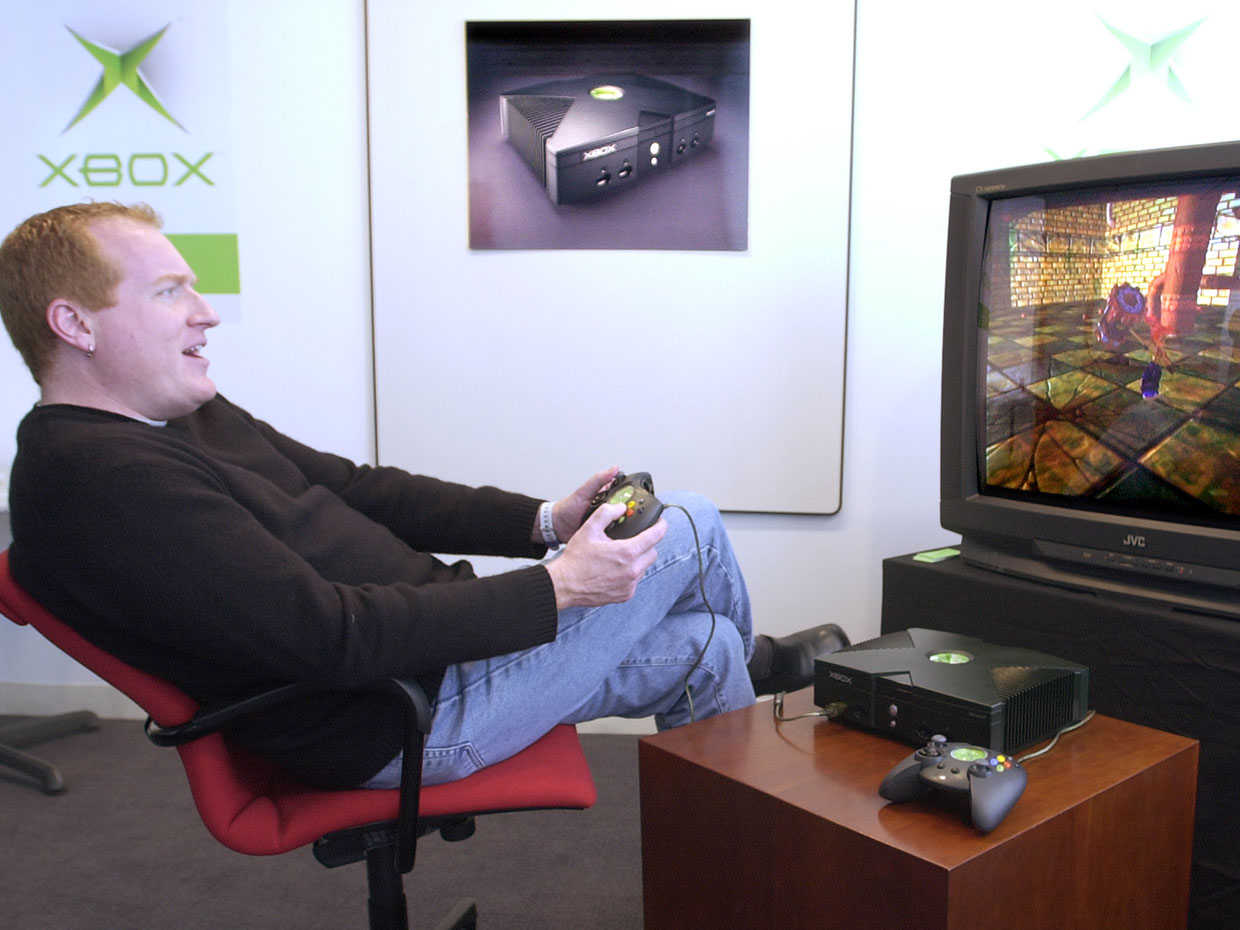
Seamus Blakely was one of the fours, considered the core of the original Xbox development team.
Kevin Bacchus, Seamus Blakely, Otto Berkes and Ted Haze formed the core of the development team in the project, which was then called DirectX Box. They used a standard PC architecture, x86 processor, but decided to order a specially designed 733 MHz Intel Coppermine Pentium III processor (Sony PlayStation 2 was built on MIPS Computer Systems RISC processors, which were commonly used on workstations). The graphics processor is a 233 MHz NV2A GPU from Nvidia. Designers added a CD-ROM, DVD-ROM and a hard disk - the latter addition was a novelty for gaming consoles of the time.
To contribute to the success of the platform, in 2000, Microsoft bought the game development company Bungie, which then developed the game Halo. Bungie published a few short clips where Halo gameplay was demonstrated, but these crumbs also made gamers eager to get a new game.
In 2001, Microsoft simultaneously introduced the Xbox and Halo. The prefix was about twice as powerful as the Sony PlayStation 2, released a year before. The hull with the embossed X at the top looked cool. For players who loved first-person shooters, Halo was a very interesting game. The system scattered like hot cakes, and Halo set a sales record. Other hits came out on the Xbox, but 18 years later, the Xbox / Halo combination remains one of the most long-lasting and successful combinations of consoles and games in the history of computers.
The original Xbox processor had one core running at 733 MHz. Today, players are waiting for the release of Halo Infinite, which is due to appear in the second half of 2019 on Xbox Ones consoles, which include eight cores operating at a frequency of 2.3 GHz.
